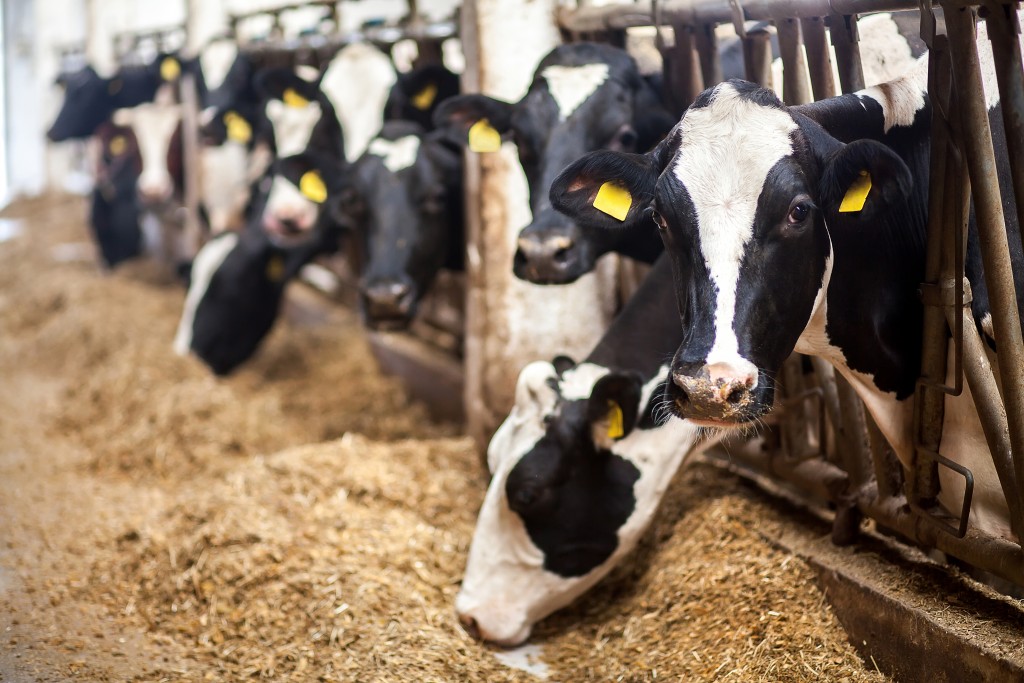Of the five major markets in the world, Europe has the biggest dairy consumption, followed by the Asia-Pacific region. The two regions’ dairy culture is well-established with a high per capita consumption rate and a trade infrastructure better prepared for the movement of dairy produce. Countries with low per capita milk consumption of less than 30 kilograms per year include most of central Africa, Senegal, and East and Southeast Asia.
Dairy includes milk, milk powder, butter, yogurt, cream, cheese, desserts, and other dairy products, with grocery retailers demanding the largest segment of all dairy products in 2019. Supermarkets and other large grocery retailers offer the most convenient and efficient way for dairy to reach the consumer commercially, from the farms’ milking parlors to the stores’ glass-door refrigerators.
Dairy’s Globalized Market
The compound annual growth rate (CAGR) of the dairy industry is expected to continue its upward path at 5.2 percent to be worth $645.8 billion by 2025. The boost is attributed to rising populations, increased urbanization, and consumers’ better understanding of the nutritional value of dairy—although the increased awareness has also meant more sales in alternatives to milk due to allergies and lactose intolerance.
The increased demand has also spurred increased investment. Some of the biggest actors in the dairy industry include the European based companies of Nestle S.A., Danone S.A., Arla Foods, Royal Friesland N.V., Parmalat S.p.A., and SODIAAL. Companies from North America include Dairy Farmers of America Inc. Dean Foods Company, Saputo Inc., and Kraft Heinz Company. Other large dairy corporations include Megmilk Snow Brand Co. from Japan and Fonterra Co-operative Group Limited in New Zealand.
Safety First
Bringing milk from the farm to the packers or to other dairy product manufacturers is part of the journey to the consumer. With the various stages of the supply chain, preventing foodborne illnesses associated with milk has made it one of the most regulated products in the food sector. For example, in 1924, 25 percent of food-related illness was sourced to milk products in the U.S., leading to the first pasteurized milk ordinance that has helped reduce the rate to less than one percent.
Designing a cold chain requires temperature tracking. Bacteria in milk won’t grow and cause contamination if stored below 70 degrees Celsius but often needs a lower storage temperature of 4.50 degrees Celsius to maintain its quality. The type of product also dictates its shelf life, with a liter of milk needing to be on the grocery shelf more quickly than a liter of ice cream. The different rates of perishing make the transport of different types of dairy products more complex. It also increases the risk of cross-contamination through spills. The risks involved emphasize the importance of cleaning schedules during the cold chain journey to maintain good sanitation and reduce the risk of harmful bacteria. All procedures during the cold chain process require close monitoring and accurate records so that if contamination occurs, the cause can be traced.
 Innovating to Improve
Innovating to Improve
Innovative solutions to maintain temperature-sensitive products throughout the supply chain require an understanding of how the product perishes. The additional layer of safety in the cold chain depends on the effectiveness of the refrigeration equipment.
The main areas where innovations have improved the cold chain include:
- Cooling systems to reduce temperatures and slow the rate of deterioration
- Transport of the products at a constant temperature
- Facilities where dairy processing procedures are conducted in a cool and sanitary environment
- Methods for packing and distribution of the end product while maintaining a low temperature, and maintaining cold storage while giving easy access at the retail outlet.
The dairy supply chain involves distance, cutting transport time, maintaining storage temperatures, and packaging that ensures product quality and safety. A mixture of harmonized legislation, improved supply chain management, and technological innovations are making sure that the dairy industry remains in a healthy condition over the long term.

